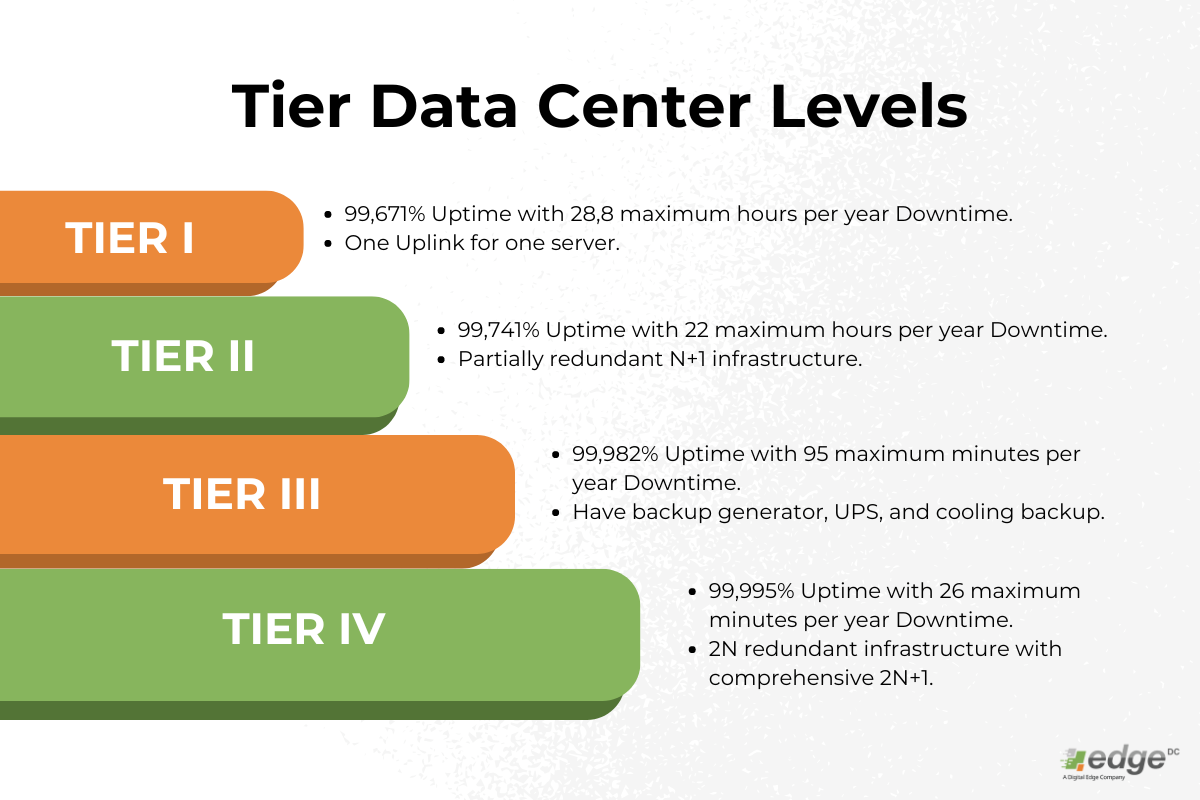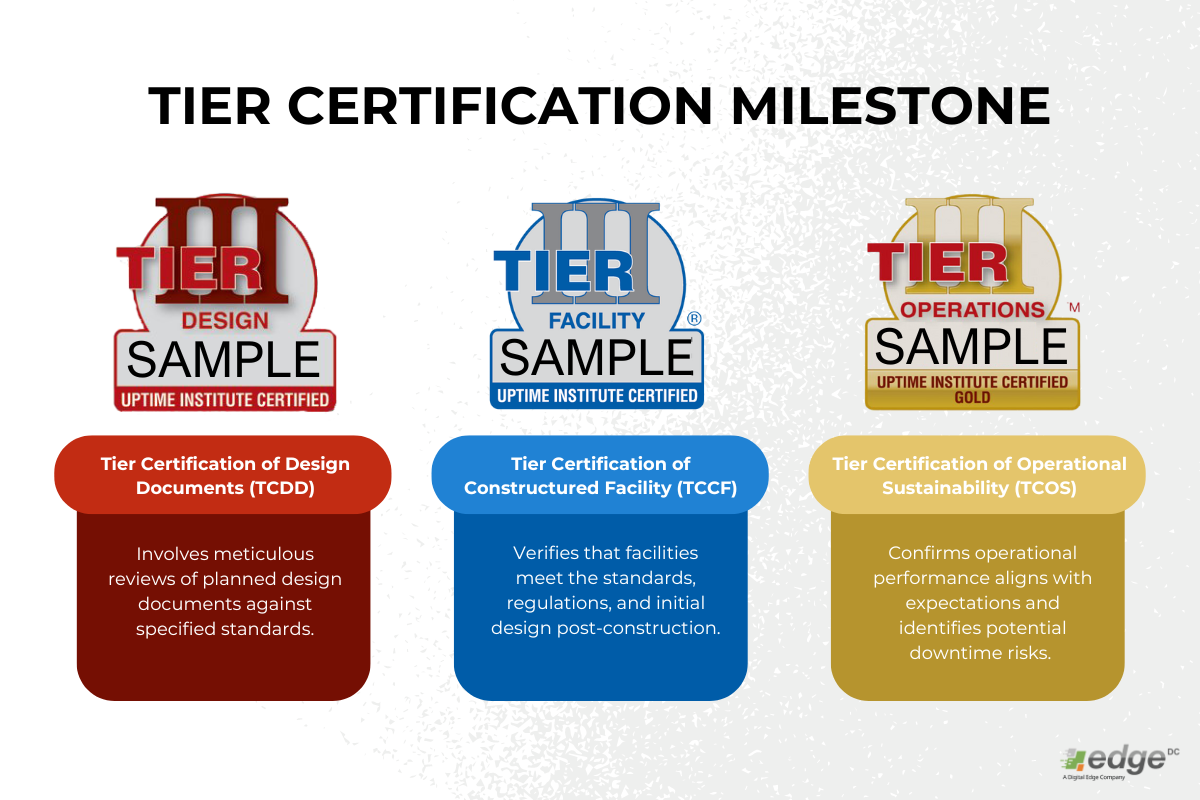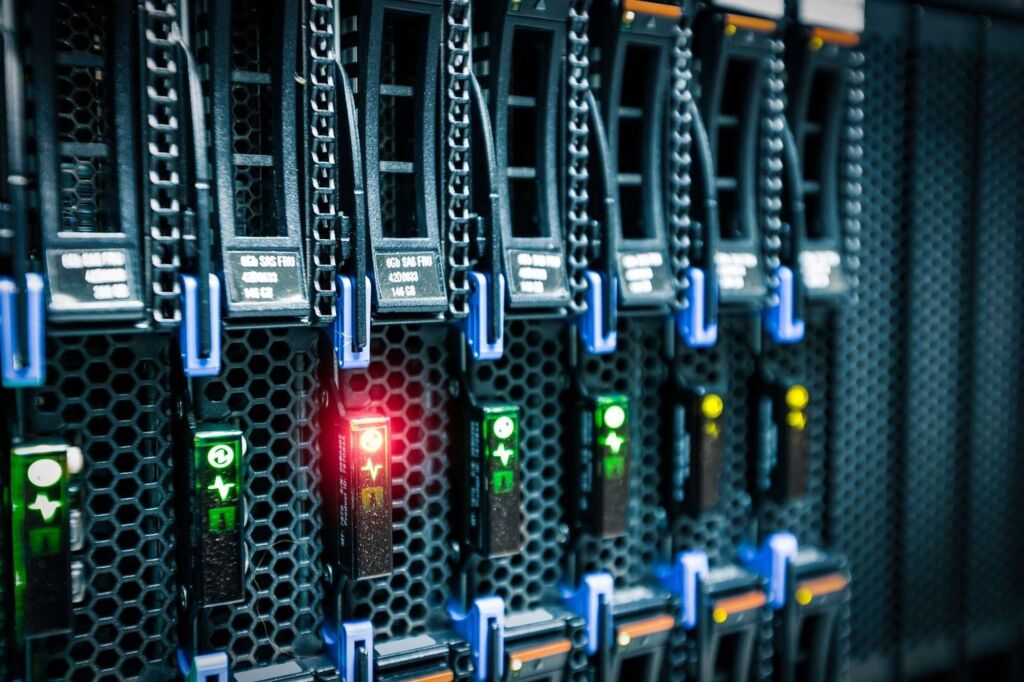Definition of Data Center Tier Levels, In Simple Terms

A company looking to utilize a data center for their specific needs must understand various concepts, one of which is referred to as “Tier”. The term “Tier” denotes a level of structure characterized by distinct levels and specifications within a data center. So, what exactly does “Tier” signify in the data center context? Let’s delve deeper into this concept!
What does “Tier” mean in a data center context?
Tiers in data centers represent a standardized classification system that categorizes different levels of infrastructure reliability, ranging from Tier I (basic) to Tier IV (advanced). The tier rating indicates the complexity and redundancy of the data center’s components, with higher tiers offering more backup systems to safeguard against failures.
Now that the concept of Tiers in Data Centers are covered, let’s further explore the specifications, specialties, and distinctions across each Tiers:
TIER I
Tier I data center infrastructure refers to the most basic or primary level, featuring a single non-redundant distribution path with one server uplink. An uplink is a form of communication where any data or signal transmitted from earth goes up towards the satellite.
Uptime is approximately 99.671%, allowing for a maximum of 28.8 hours of downtime per year. Due to its simplicity, security vulnerabilities are slightly higher, and maintenance involves shutting down the necessary power path. Many companies opt for Tier I infrastructure to establish their own data centers and manage data during regular work hours.
TIER II
Tier II data center infrastructure builds upon Tier 1 by incorporating additional redundant components and resources. It offers an uptime of approximately 99.741%, allowing for a maximum of 22 hours of downtime per year. Tier II includes partially redundant N+1 infrastructure, backup generators, and Uninterruptible Power Supplies (UPS) to safeguard against power failures.
To acquire greater perspective, the ‘N’ in N+1 refers to the bare minimum of independent modules required for a system and Uninterruptible Power Supplies (UPS) refers to a device that powers equipment to operate.
TIER III
Tier III data center infrastructure represents an advanced level that adheres to international standards across infrastructure, facilities, and security systems. Unlike Tier I and Tier II, Tier III facilities do not require complete shutdown during maintenance or equipment replacement.
Tier III boasts an uptime of approximately 99.982%, allowing for a maximum downtime of 95 minutes per year. It features robust protections such as backup generators, Uninterruptible Power Supplies (UPS), redundant cooling systems for IT operations security, and a more comprehensive N+1 infrastructure. Additionally, Tier III facilities activate backup systems during maintenance to ensure continuous operations.
TIER IV
Tier IV represents the pinnacle of data center infrastructure, characterized by extensive redundant components and an impressive uptime of approximately 99.995%, resulting in a maximum downtime of only 26 minutes per year. This level of reliability is achieved through advanced measures such as dual backup generators and Uninterruptible Power Supplies (UPS), redundant sources for electricity and cooling, and a 2N redundant infrastructure with comprehensive 2N+1 redundancy.
These sophisticated features establish Tier IV as the highest level of data center infrastructure, offering unparalleled security, protection, and operational reliability.

TIER CERTIFICATE MILESTONE
Referring to Uptime Institute, data center facilities comprise various structural and mechanical components essential for delivering reliable products and services. To ensure quality, there are three certification milestones:
Tier Certification of Design Documents (TCDD) involves meticulous reviews of planned design documents against specified standards.
Tier Certification of Constructed Facilities (TCCF) verifies that facilities meet the standards, regulations, and initial design post-construction.
Tier Certification of Operational Sustainability (TCOS) confirms operational performance aligns with expectations and identifies potential downtime risks. Recognition levels include bronze, silver, and gold, each with specific minimum criteria.
CONCLUSION
When it comes to data infrastructure, the choice of Tier relies on the specific needs, preference, and operational management capabilities of each company. Tier IV, for instance, might not be ideal for every company. To remain competitive in today’s dynamic landscape, companies are able to upgrade their data systems to ensure the infrastructure supports current demands and requirements. This progress creates new opportunities for business growth.
At EDGE DC, both EDGE1 and EDGE2 are Tier-III data certified. We focus on providing strong solutions to protect your business’s data, with high security and support from our reliable team. Contact us below to see how we can help support your business digital transformation needs.


